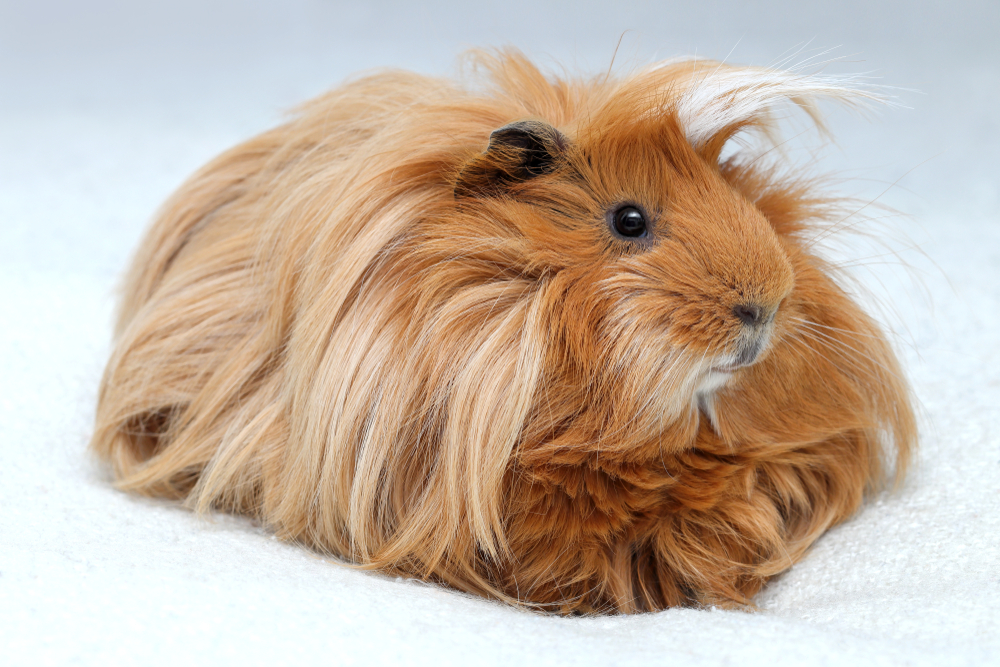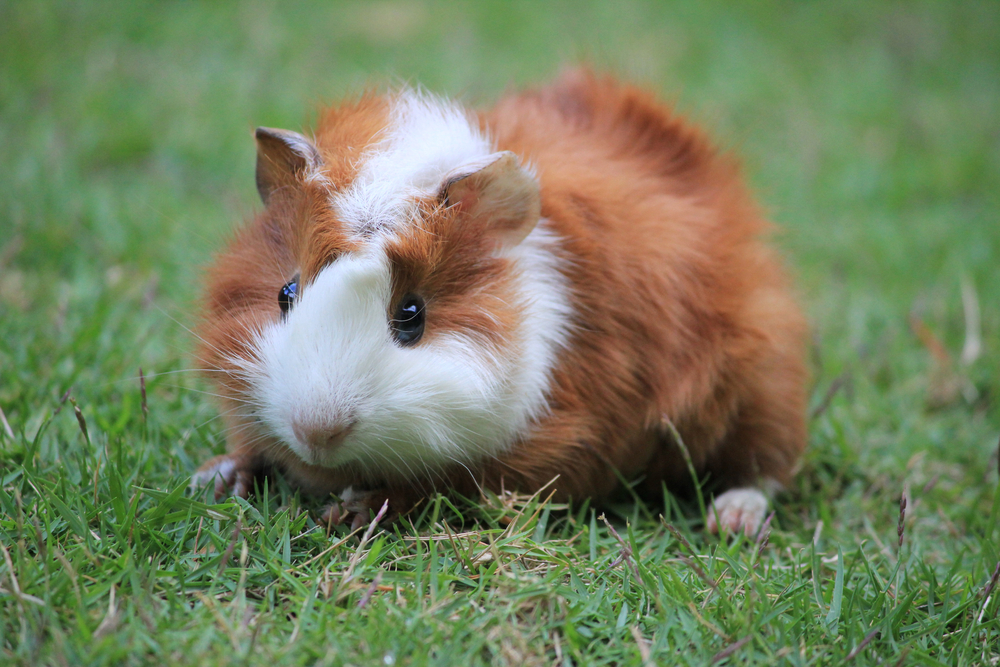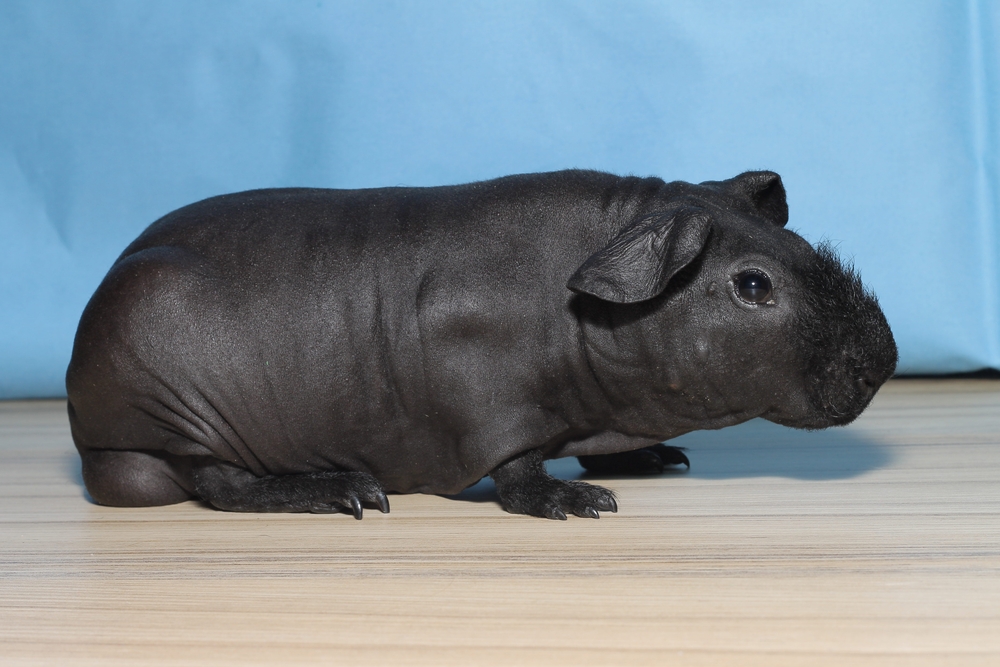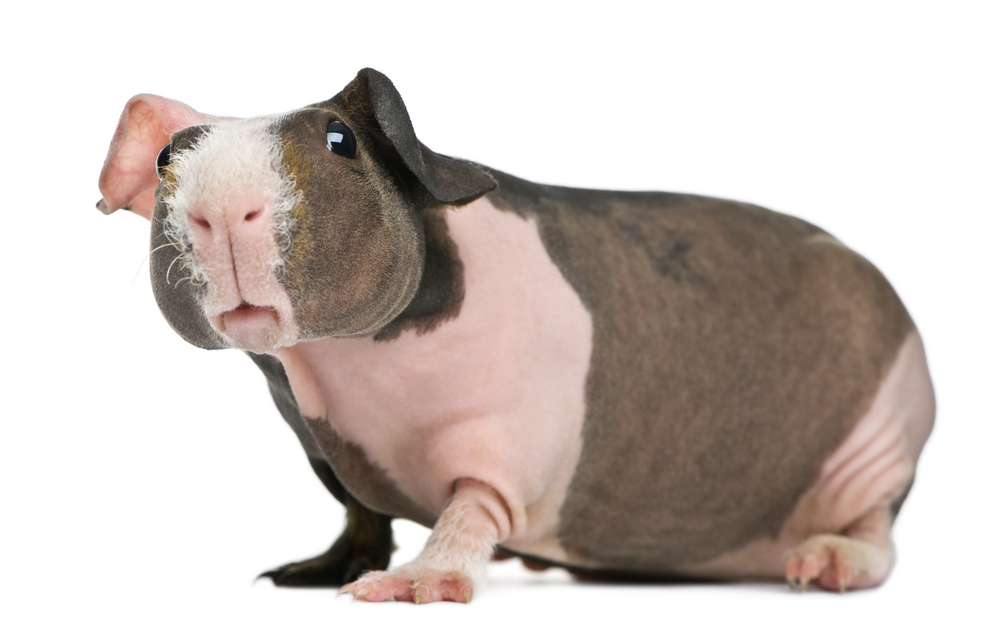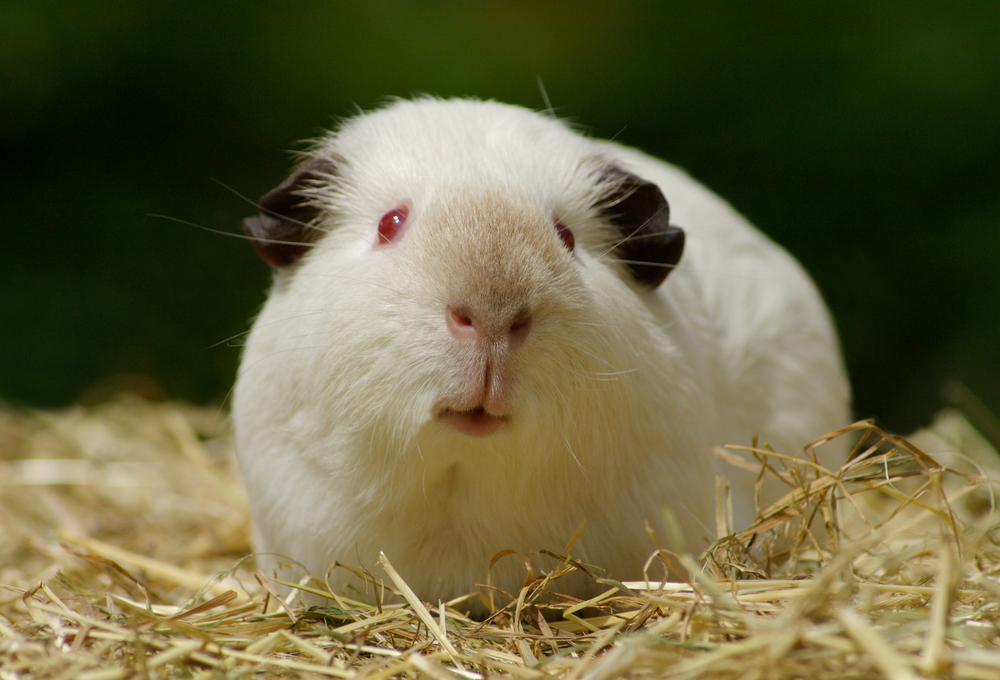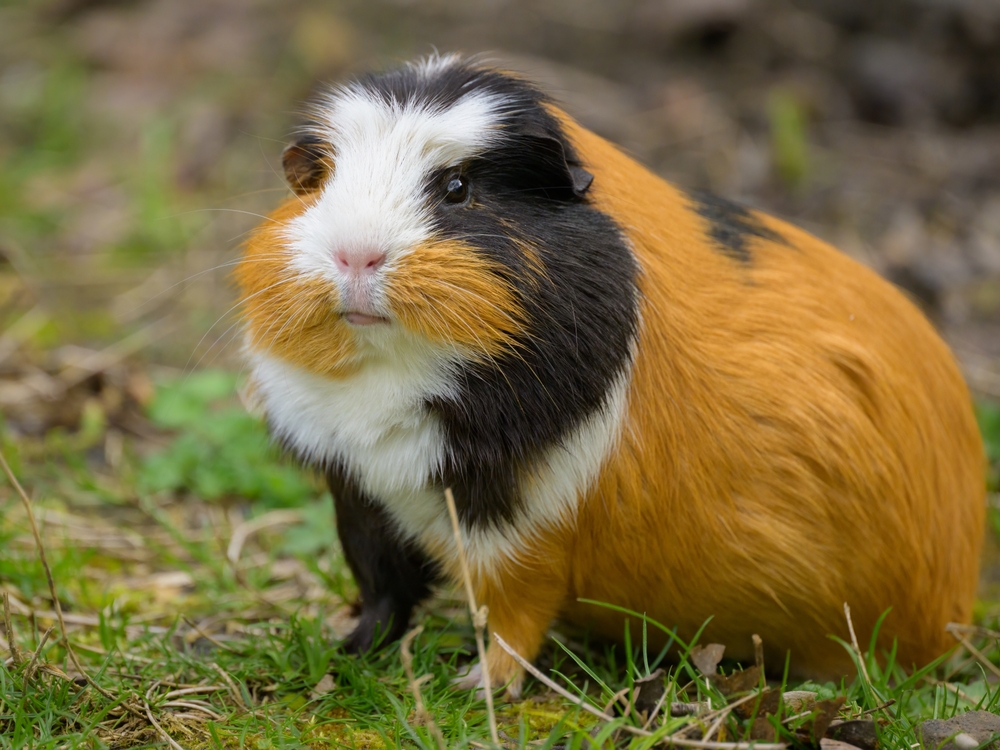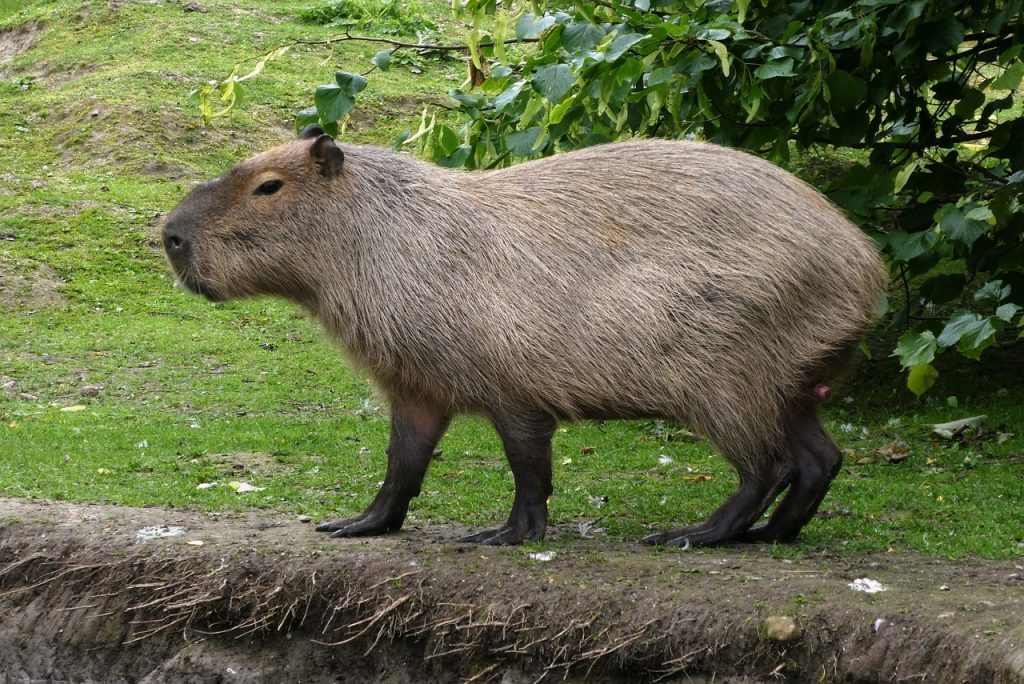The Longhaired Guinea Pig is a domesticated variety of Cavia porcellus. Its closest relatives are other guinea pig breeds, while its wild ancestor is the montane guinea pig (Cavia tschudii) of South America.
About
The Longhaired Guinea Pig is a domestic guinea pig breed celebrated for its flowing, silky coat that can grow several inches long, giving it a striking and elegant appearance. Unlike short-haired breeds, the Longhaired variety requires regular grooming to keep its coat free from tangles, mats, and debris. Its hair may be straight, wavy, or parted, depending on the specific breed line, with popular varieties including the Peruvian, Sheltie (Silkie), and Texel. Coat colors and patterns are highly diverse, ranging from solid shades to multicolored markings.
Longhaired Guinea Pigs are medium-sized, typically weighing between 900–1,200 grams (2–2.5 lbs) and measuring 20–25 cm (8–10 in) long. Despite their glamorous coats, they share the same gentle, curious, and highly social nature found in all guinea pigs. These animals thrive on companionship and should be kept in pairs or groups to maintain emotional well-being. Owners prize them not only for their looks but also for their affectionate, interactive personalities.
Care for Longhaired Guinea Pigs requires more attention than for short-haired breeds. In addition to their herbivorous diet of hay, pellets, fresh vegetables, and vitamin C supplementation, they need frequent grooming sessions to keep their coats healthy. Because their long hair can trap dirt and moisture, they require clean, dry bedding and regular inspections to prevent skin issues. Reproduction follows the same pattern as other guinea pigs, with gestation lasting 59–72 days and litters averaging 2–4 pups, which are born fully furred and mobile.
The Longhaired Guinea Pig is not a separate species but a collection of coat-type breeds within the domestic guinea pig. Its scientific name is Cavia porcellus, and it belongs to the family Caviidae, which also includes cavies, maras, and other related South American rodents. With attentive grooming and care, Longhaired Guinea Pigs typically live 5–7 years, rewarding owners with beauty, charm, and companionship.
Physical Characteristics
Longhaired guinea pigs are among the most distinctive guinea pig breeds, admired for their flowing coats that set them apart from short-haired varieties.
Coat:
Their defining feature is their long, silky fur, which can reach several inches in length and often requires regular grooming. Depending on the breed type (Peruvian, Sheltie, Coronet, or Texel), the hair may grow straight, wavy, or curly, and it flows over the body like a natural cloak. Coat colors vary widely, including solids, bi-colors, tri-colors, and patterned markings.
Face:
They have a rounded head with a blunt nose, expressive eyes, and drooping ears. In some longhaired varieties, the fur cascades over the face and shoulders, giving them a dramatic appearance.
Body:
Like all guinea pigs, their bodies are compact and cylindrical. The long hair covers much of their body shape, giving them a fuller, more rounded profile compared to short-coated breeds.
Size:
-
Length (Body): 8 to 12 in (20 to 30 cm)
-
Shoulder Height: About 4 to 5 in (10 to 13 cm)
Weight:
-
Adults generally weigh 1.5 to 2.5 lbs (700 to 1,100 g).
The longhaired guinea pig’s flowing coat makes it one of the most visually striking and high-maintenance breeds, requiring daily grooming to keep its fur free of tangles and debris.
Reproduction
The reproductive cycle of longhaired guinea pigs is the same as other guinea pig breeds, though their pups often inherit distinctive coat traits.
1. Mating and Courtship:
Longhaired guinea pigs are social and breed year-round when males (boars) and females (sows) are kept together. Courtship includes gentle nudging, chasing, and vocalizations such as purring and squeaking.
2. Gestation:
The gestation period ranges from 59 to 72 days, averaging about 68 days. This relatively long pregnancy allows pups to be born well-developed.
3. Birth of Pups:
Litters usually consist of 1 to 6 pups, most commonly 3 to 4. Pups are precocial, born fully furred, with open eyes and teeth, and able to walk within hours. In longhaired breeds, pups often show signs of their developing coat right at birth.
4. Care and Nurturing:
Mothers nurse their young while pups also begin nibbling solid food within hours. The dense fur of longhaired pups requires extra monitoring to ensure it stays clean and does not interfere with nursing.
5. Weaning and Growth:
Weaning occurs at around 3 weeks of age, after which males are typically separated to prevent early breeding.
6. Independence and Maturity:
-
Females: Can become fertile as early as 4 weeks.
-
Males: Reach sexual maturity around 8–10 weeks.
Because of their rapid maturity and coat inheritance, careful breeding is important, especially to avoid overwhelming pet owners unprepared for the grooming needs of longhaired offspring.
Lifespan
Longhaired guinea pigs are cherished for their flowing coats, and their lifespan depends heavily on attentive care, grooming, and nutrition.
Lifespan in the Wild (Not Applicable):
Longhaired guinea pigs are a domesticated variety of Cavia porcellus and do not occur naturally in the wild. Their closest wild relatives, such as the montane guinea pig (Cavia tschudii), are native to South America.
Lifespan in Captivity:
With proper diet and grooming, longhaired guinea pigs typically live 5 to 7 years, though some may reach 8 years with excellent care. Their lifespan is similar to other guinea pig breeds, but poor coat maintenance can impact their overall health.
Threats to the Longhaired Guinea Pig:
-
Coat Care Needs: Without regular grooming, their fur can tangle or mat, leading to skin infections.
-
Dietary Deficiencies: Lack of vitamin C leads to scurvy, a serious risk for all guinea pigs.
-
Environmental Stress: Overheating can occur if long coats are not trimmed in warmer climates.
-
Dental and Digestive Problems: As with all guinea pigs, inadequate hay intake can cause tooth overgrowth and digestive distress.
Care and Protection:
A balanced diet rich in hay and vitamin C, combined with routine grooming and coat trimming, is essential for their well-being. With proper care, longhaired guinea pigs can thrive as affectionate companions throughout their lifespan.
Eating Habits
Longhaired guinea pigs are herbivores whose diet mirrors that of other guinea pig breeds, though their dense coats mean they need extra nutrients for overall health.
Diet:
Their diet should be based on unlimited hay, which provides essential fiber for digestion and natural tooth wear. Daily servings of fresh vegetables and leafy greens are necessary, particularly those high in vitamin C (such as bell peppers, kale, and parsley), since guinea pigs cannot produce this vitamin on their own. Commercial guinea pig pellets fortified with vitamin C help ensure consistency in their diet. Fruits may be given sparingly as occasional treats.
Feeding Behavior:
Longhaired guinea pigs graze steadily throughout the day and night, mimicking natural foraging behavior. They are social feeders, often eating alongside companions, which encourages regular and stress-free eating.
Special Considerations:
-
Vitamin C: Essential for preventing scurvy, a life-threatening deficiency.
-
Hydration: Clean, fresh water must always be available.
-
Hair and Grooming: Long coats may pick up bits of hay and vegetables, requiring regular grooming to keep food from tangling in their fur.
-
Balanced Diet: Sudden changes in diet may cause digestive upset, so new foods should be introduced gradually.
Social Eating:
Longhaired guinea pigs thrive when eating in groups, reinforcing their natural herd instincts and promoting healthier feeding habits.
Their eating habits reflect their grazing nature and reliance on vitamin C, while their long coats require extra care to prevent food and debris from affecting their overall health.
Uniqueness
The Longhaired Guinea Pig is one of the most eye-catching and distinctive guinea pig varieties, admired for its show-quality coats and charming personality.
Luxurious Coat:
The defining feature is its long, flowing fur, which can be straight, wavy, or curly depending on the specific breed (Peruvian, Sheltie, Coronet, or Texel). This dramatic hair growth often requires daily grooming, making them one of the most high-maintenance guinea pig types.
Show Breed Origins:
Longhaired guinea pigs were selectively bred to produce extravagant coats, making them especially popular in shows and exhibitions. Their appearance is more ornamental compared to short-haired breeds.
Dramatic Appearance:
The flowing hair can grow to cover the entire body, sometimes even obscuring the face and feet. When well-groomed, they are among the most striking guinea pigs, often resembling miniature lapdogs in elegance.
Care Demands:
Unlike short-haired breeds, longhaired guinea pigs require frequent brushing and occasional trimming to prevent tangling, matting, and overheating. This makes them best suited for owners prepared for extra grooming.
Friendly Temperament:
They share the same gentle, social, and vocal personality traits as other guinea pigs, but their elegant appearance paired with affectionate nature makes them particularly endearing companions.
The Longhaired Guinea Pig’s blend of ornamental beauty, grooming needs, and playful temperament makes it one of the most unique and memorable guinea pig breeds.
Be the First to Share Photos of This Species.
FAQ’s
1. What is the closest species to the Longhaired Guinea Pig?
2. How does the Longhaired Guinea Pig compare to other guinea pigs?
Longhaired guinea pigs stand out for their flowing coats, which can be straight, curly, or wavy depending on the type. Unlike short-haired breeds, they require daily grooming to prevent tangles and matting. In size, diet, and social behavior, they are the same as other guinea pigs, but their coats make them higher-maintenance pets.
3. What national parks provide the best chance to see a Longhaired Guinea Pig?
Longhaired guinea pigs are a selectively bred, domesticated variety and are not found in the wild or in national parks. To see guinea pigs in their natural habitats, one would need to visit South America’s Andes, where wild relatives such as Cavia tschudii still live.



































































